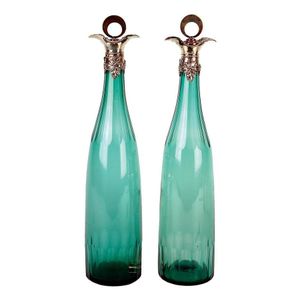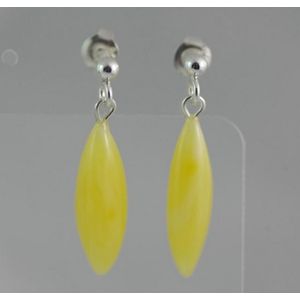Victorian Carnelian Drop Earrings in Rose Gold
You must be a subscriber, and be logged in to view price and dealer details.
Subscribe Now to view actual auction price for this item
When you subscribe, you have the option of setting the currency in which to display prices to $Au, $US, $NZ or Stg.
- Carnelian Glass - Carnelian glass is a type of glass that is colored red, orange, or brownish-red. It is made by adding iron oxide to the glass mixture. The color of carnelian glass can vary depending on the amount of iron oxide that is added, as well as the firing temperature. Carnelian glass is often used to make beads, jewellery, and other decorative items. It can also be used to make stained glass windows and other art objects. Carnelian glass is sometimes called "carnelian chalcedony" or "carnelian quartz."
Carnelian glass was first made in the Roman Empire. It was also made in ancient Egypt, Greece, and Mesopotamia. Carnelian glass was not made again until the Renaissance, when it became popular again. Today, carnelian glass is made in many countries around the world. - Victorian Period - The Victorian period of furniture and decorative arts design covers the reign of Queen Victoria from 1837 to 1901. There was not one dominant style of furniture in the Victorian period. Designers used and modified many historical styles such as Gothic, Tudor, Elizabethan, English Rococo, Neoclassical and others, although use of some styles, such as English Rococo and Gothic tended to dominate the furniture manufacture of the period.
The Victorian period was preceded by the Regency and William IV periods, and followed by the Edwardian period, named for Edward VII (1841 ? 1910) who was King of the United Kingdom and the British Dominions and Emperor of India for the brief period from 1901 until his death in 1910.
This item has been included into following indexes:
-
earrings, gold
- gold and diamond drop / pendant 3,296
- gold, other 3,442
- earrings, period or style - Victorian period 280
- earrings, set with
Visually similar items

A pair of Victorian tall green glass and silver mounted decanters, the tapered cylindrical bodies with facet cut bases and necks, the silver mounts with double pouring spouts and grape leaf embossed border. London 1839 by Charles Reily & George Storer; wit

A stylish pair of turquoise and diamond earrings, 18ct white gold, made as simple, modern drops, each drop featuring a smooth, polished teardrop shaped pieced of turquoise, intense aqua blue/green in colour with fine veins throughout, measuring 18.5 x 11 m


Murano F&M Ballarin signed perfume bottle with stopper, with original sticker & signed to the base. Condition: excellent to good, very minor wear. Height 12 cm
